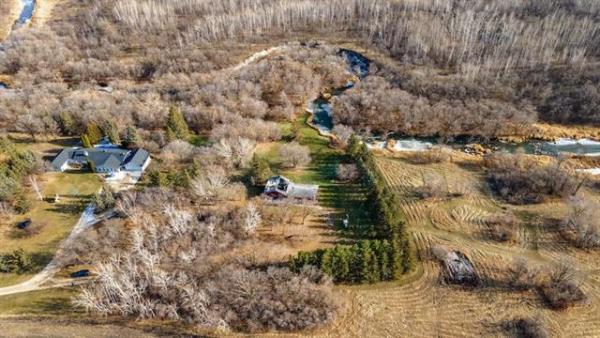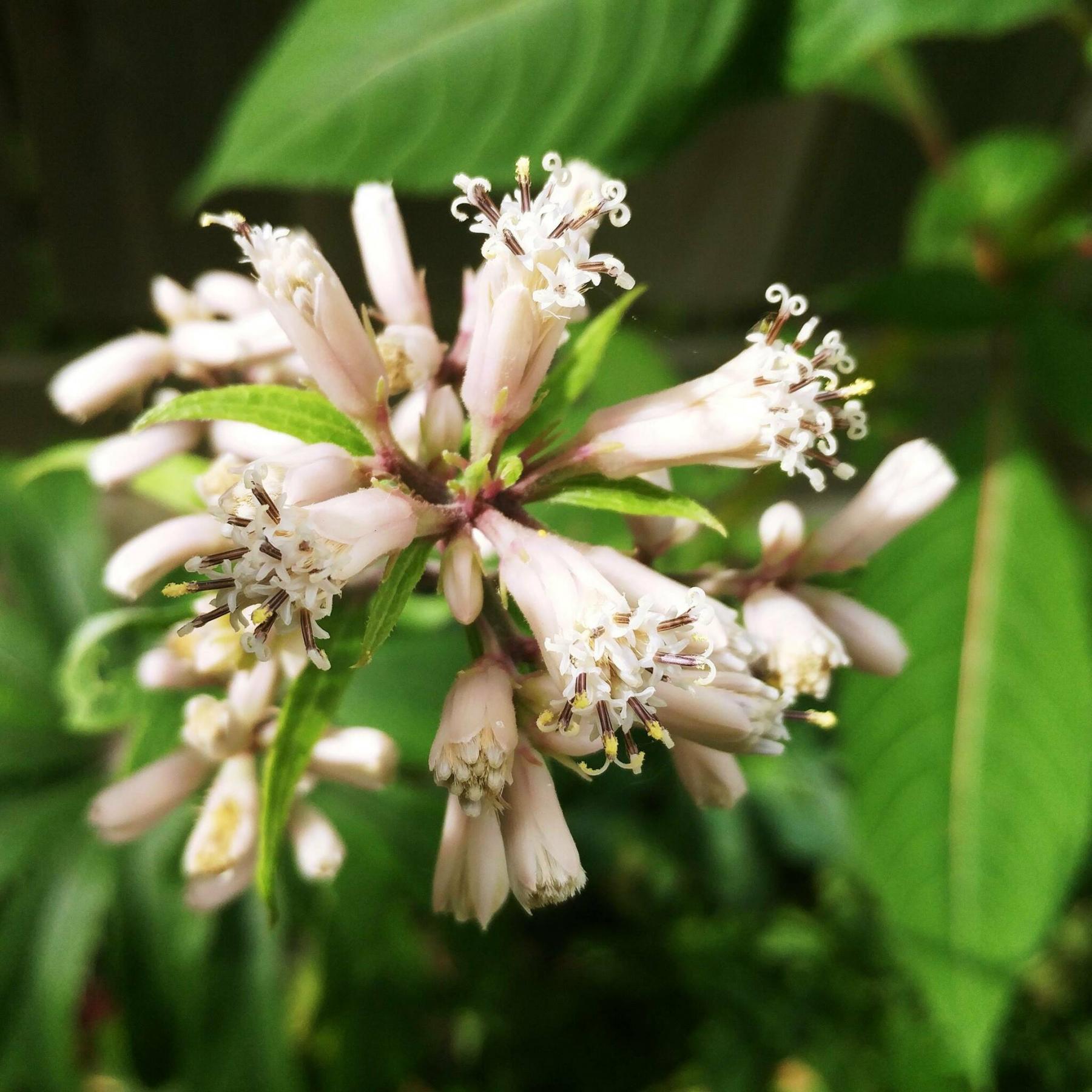
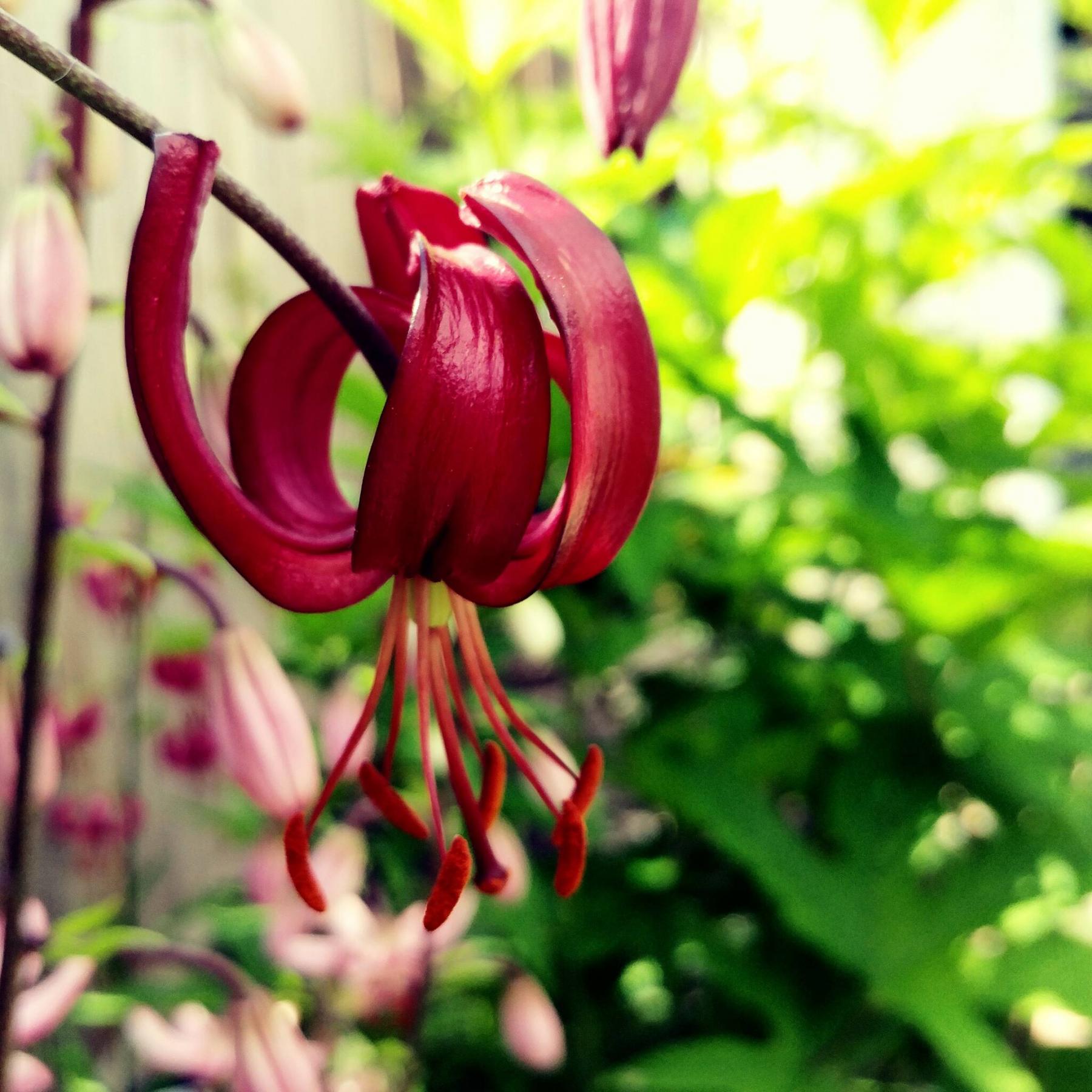
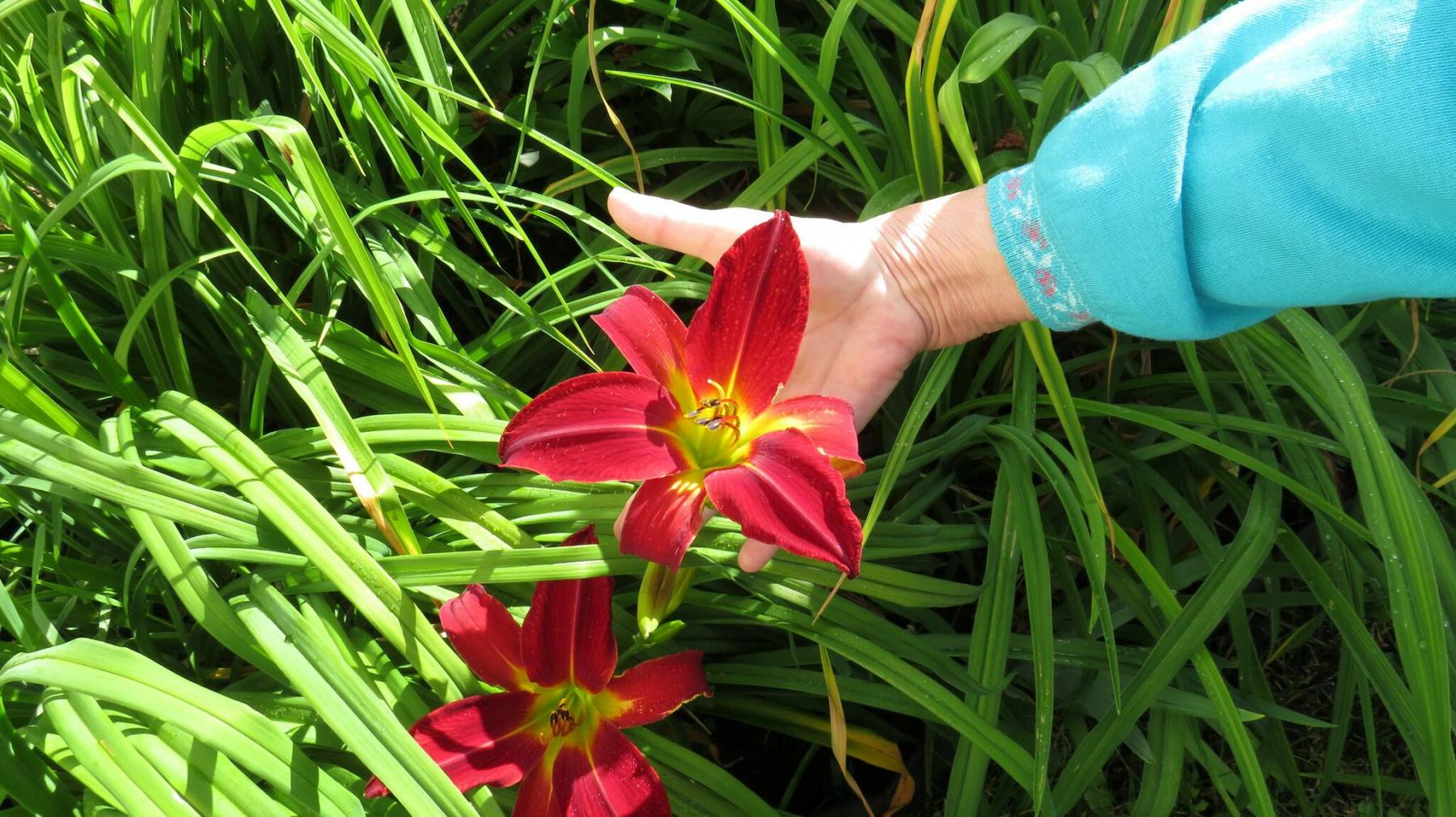
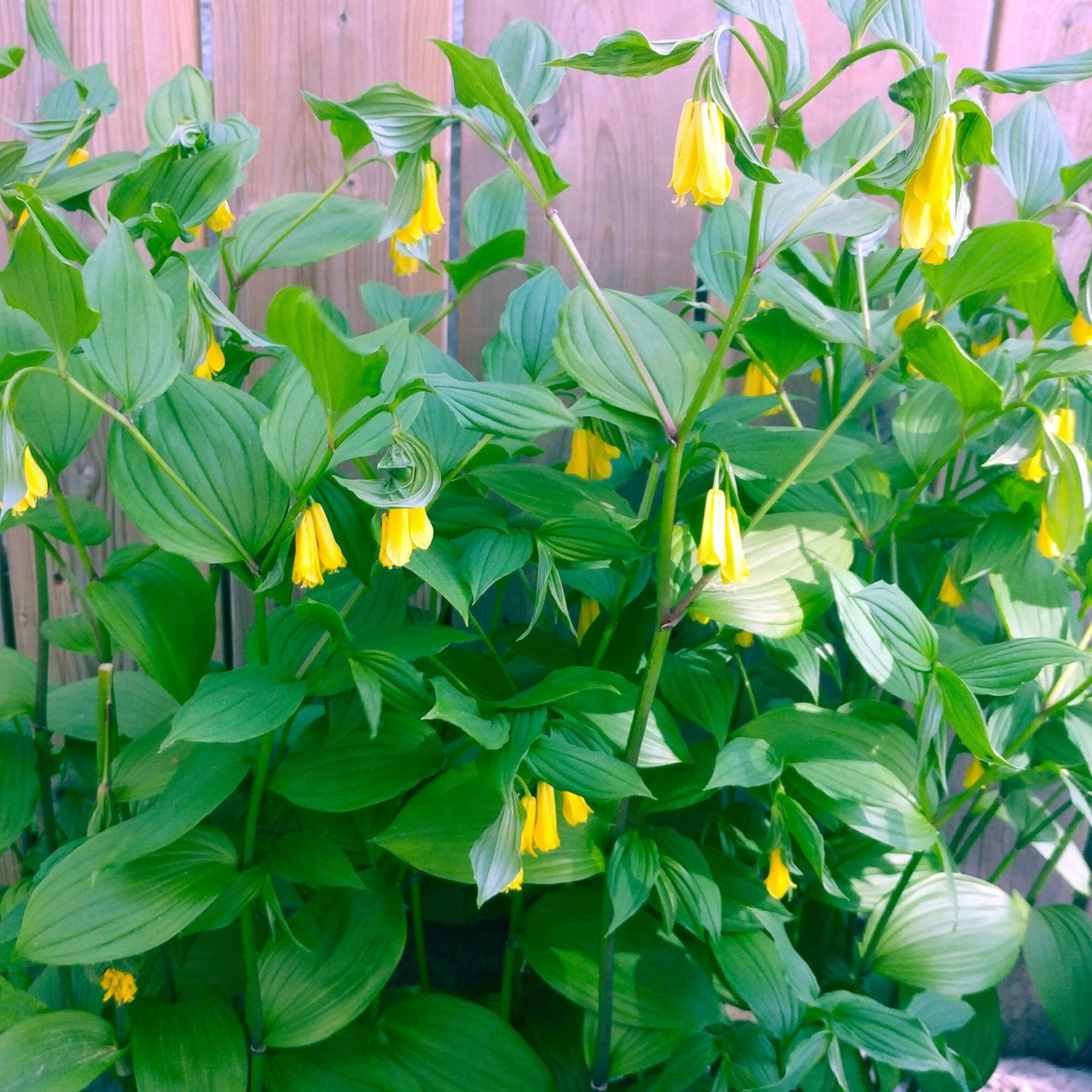
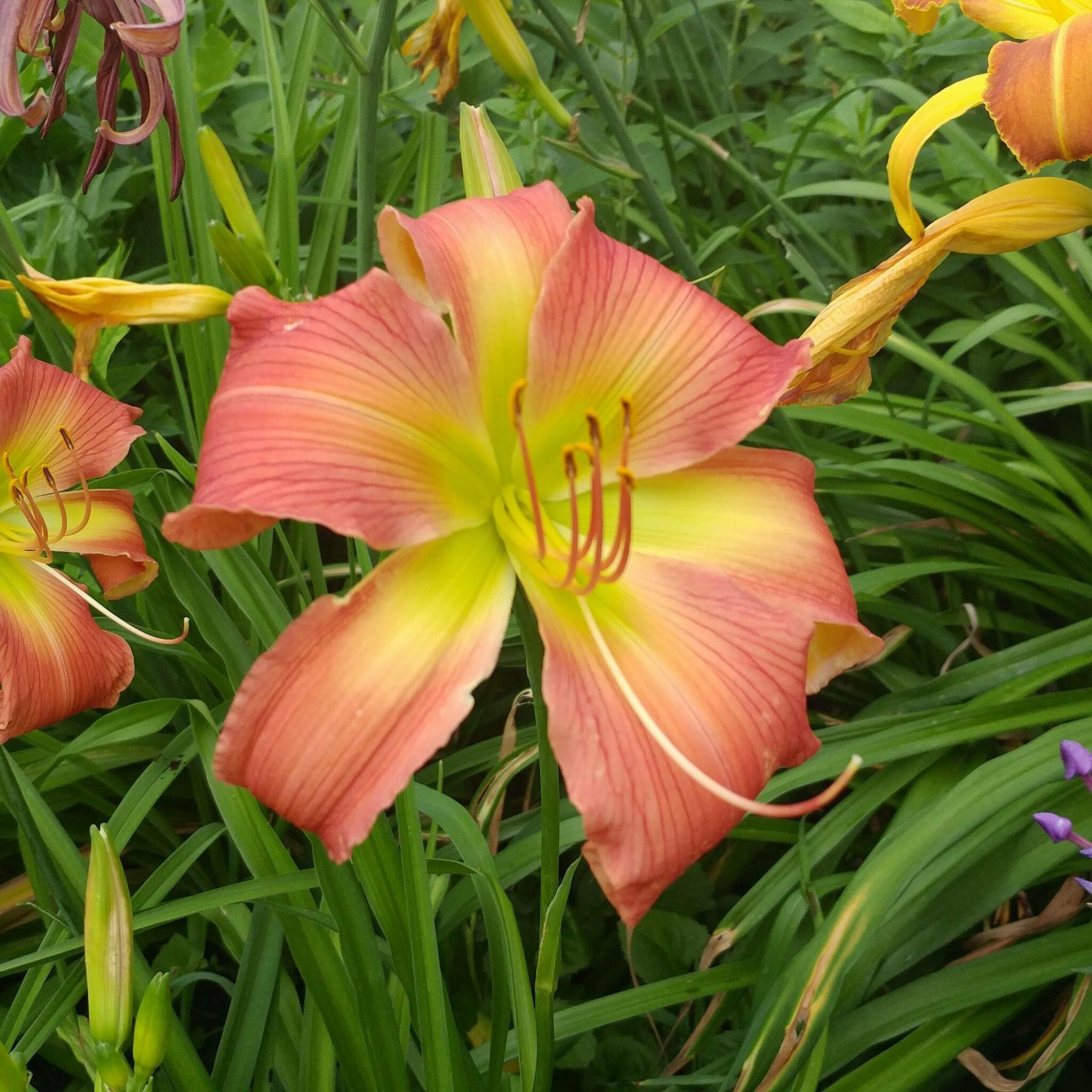
Naomi Wiebe values plants that have quality and substance. Space is at a premium in this avid plant collector’s tiny garden in north Winnipeg and every plant is chosen with care. No space is wasted on anything superfluous.
For Wiebe, it’s not about a strategically placed granite boulder here and vertical interest there or planting in drifts, a popular trend that involves filling a space with a grouping of the same plant — that would bore her stiff. Neither does she lose any sleep over which plants to choose for the sole purpose of achieving coarse textured leaves against fine textured leaves. Let those details satisfy someone else’s garden design criteria. Wiebe’s passion is discovering and growing plants that provide her with real value and joy.
Oh, Wiebe is interested in plant form, texture and colour contrast, all right, but in the context of a plant’s individual qualities. Take, for example, Wiebe’s Syneilesis aconitifolia Shredded Umbrella Plant. Her acquisition of this handsome beauty has everything to do with this unique plant’s deeply divided foliage and form that resembles a shredded umbrella. The tiny pinkish-white flowers that bloom in late spring to early summer might not make a big impression from across the garden but up close, they are an exquisite study in detail. Wiebe’s Shredded Umbrella Plant is truly a rare and impressive sight.
Disporum flavens Yellow Fairy Bells is another intriguing plant. Native to Korea, this plant’s distinctively drooping, yellow-gold flowers appear in clusters on arching stems in early spring. Both these varieties are planted in a narrow side garden that is 90 cm wide and nearly 11 metres long. There is also Double Bloodroot with its gorgeous, thick, dark green foliage that is rounded and multi-lobed growing alongside delicate ferns and an assortment of hostas, such as Atom Smasher and Curly Fries with their long, narrow leaves and Hosta Dragon Tails, which produces an abundance of flowers.
Clematis Joe Zary, developed in Saskatchewan by S.J. Zubrowski can be found growing throughout Wiebe’s garden. It blooms in spring and produces a second flush of violet star-shaped flowers in mid-summer. Wiebe also grows Thalictrum Black Stockings meadow rue, which stands tall on near-black stems topped with a cloud of fluffy, lavender-purple flowers.
The main attraction, however, is Wiebe’s collection of peonies and daylilies. She grows more than 50 peonies, including herbaceous and intersectional or Itoh peonies, and more than 40 prized daylilies.
Wiebe’s front yard measures 10 metres by 12 metres and includes 35 peonies. When the peonies are in bloom, the front garden is a blaze of colour. This year, says Wiebe, the cool weather at the start of the season extended the bloom period beautifully. One of the first peonies to bloom is Early Bird, a dwarf peony with a single scarlet red flower and finely cut dissected foliage that belongs to the Rock Garden group of peonies, so named for its smaller stature. Wiebe starts some of her peonies from seedlings that she obtains from Canadian Peony Society seed exchange.
Wiebe’s backyard is 10 by 10 metres and this is where she grows the majority of her daylilies. Some of the daylilies she grows are from seed purchased from Lily Auction which, despite its name, sells mostly daylilies. Lily Auction carries seeds from across North America.
Wiebe extends the blooming season by growing daylily varieties that bloom in early season and mid- to late season. Her mature daylilies started blooming at the end of July and have put on a beautiful show throughout the month of August. Hemerocallis Velvet Widow is an early-midseason daylily that was in bloom on my visit to Wiebe’s garden. Velvet Widow is a black red spider lily with a green throat. Unusual spider daylilies are highly sought after for their narrow petals. It is one of Wiebe’s favourites and the name says it all. “Velvet Widow is such a red red — not muddy or brownish-red.” The bloom size is 20 cm.
The variety names of daylilies are some of the most unconventional plant names you will ever encounter. Scary Terry, Thundering Paws, Radiation Biohazard, and Buddy’s Wild and Wonderful are just a few of the delightfully named daylilies that grow in Wiebe’s garden. “Greywoods Workhorse Willie is my very favourite daylily,” says Wiebe. “Well, they are all my favourites.” The bloom colour of this variety, which stands 101 cm tall, is coral-peach-yellow bitone with a green throat. Wiebe has planted it in front of a Karl Foerster ornamental grass, which makes a lovely backdrop.
Wiebe says that Money Maker is a fantastic daylily. Bred by James Gossard, a well-known American hybridizer, Money Maker has magenta purple blooms with a feathered purple maroon eyezone. She has several daylilies in her collection that were bred by Gossard — Dragon Fang, for example, is a midseason-late daylily with purple flowers, an orange throat, and lots of white teeth on the petals and sepals. Neon Flamingo is a gorgeous, award-winning Gossard daylily that is neon pink with a lighter pink zone above a green throat. Much of the daylily seed that she has sourced is also Gossard stock.
Ruby Grandeur is a midseason-late daylily with ruby red blooms. Described as a ‘self’, the petals and sepals of Ruby Grandeur are of the same colour. Don’t Kiss My Sis is an unusual pastel-coloured form with quilled sepals.
Wiebe has grown her collection of plants not only from plant and seed purchases but also from plant and seed exchanges with friends and family. Wiebe loves to share plants and says it is the best part of gardening. One vibrantly coloured daylily, Screaming Green crossed with Cat Dancer, was a gift from a friend in Saskatchewan. She also harvests seeds from the seed pods on her daylilies. Occasionally, a daylily crosses with another daylily in her garden. Wiebe takes care to not disturb the soil in her garden in spring so that unknown seedlings have a chance to grow.
Interestingly, Wiebe’s fascination with plants started with roses when she first moved to her home in 1994. But then a close friend introduced her to lilies. Wiebe grew several Asiatic and Martagon lilies for several years until she found that she could not keep up with picking and squishing the scarlet lily beetle. But now that the population of lily beetles has fallen dramatically in Winnipeg, Wiebe is excited to grow lilies again. This year, a deep maroon-black Cattaniae Martagon lily bloomed for the first time in Wiebe’s garden. She planted a bulb that had shattered five years ago. “The longevity and perseverance of lilies really says something,” says Wiebe.
Wiebe has no fear of pushing boundaries. Not all of Wiebe’s plants are hardy to Zone 3. The Shredded Umbrella Plant, for example, is classified as Zone 5. Wiebe, though, is as pragmatic as she is curious. “I rely entirely on snow cover (for winter protection),” she says. She does not cut her plants back in fall. “The trend now is to leave everything standing to catch the snow.” She overwinters peony and daylily seedlings, however, in pots buried to soil level and covered with a bit of peat moss or soil.
colleenizacharias@gmail.com



